Disclosure: We may get commissions for purchases made through links in this post.
Concrete pavers are one of the most popular outdoor surface options. The use of concrete pavers is expanding on both commercial and residential construction projects. One lingering question if you're planning to use this type of pavers is, do these pavers need rebar like most concrete does? Don't worry! We researched that for you and here's what we found.
No. Concrete pavers don't need to have rebar. Mixing dry concrete mixture composed of cement, gravel, sand, and pigments to add color is how concrete pavers are made. The result of the mix is much tighter than you can achieve with poured concrete. These pavers expand and contract with the seasons, however, they don't crack like concrete slabs.
You may wonder, if concrete pavers don't need rebar, how are they made? Are they strong enough to carry the weight of everything that goes above them? Keep reading to learn more about concrete pavers and why they don't need rebar.
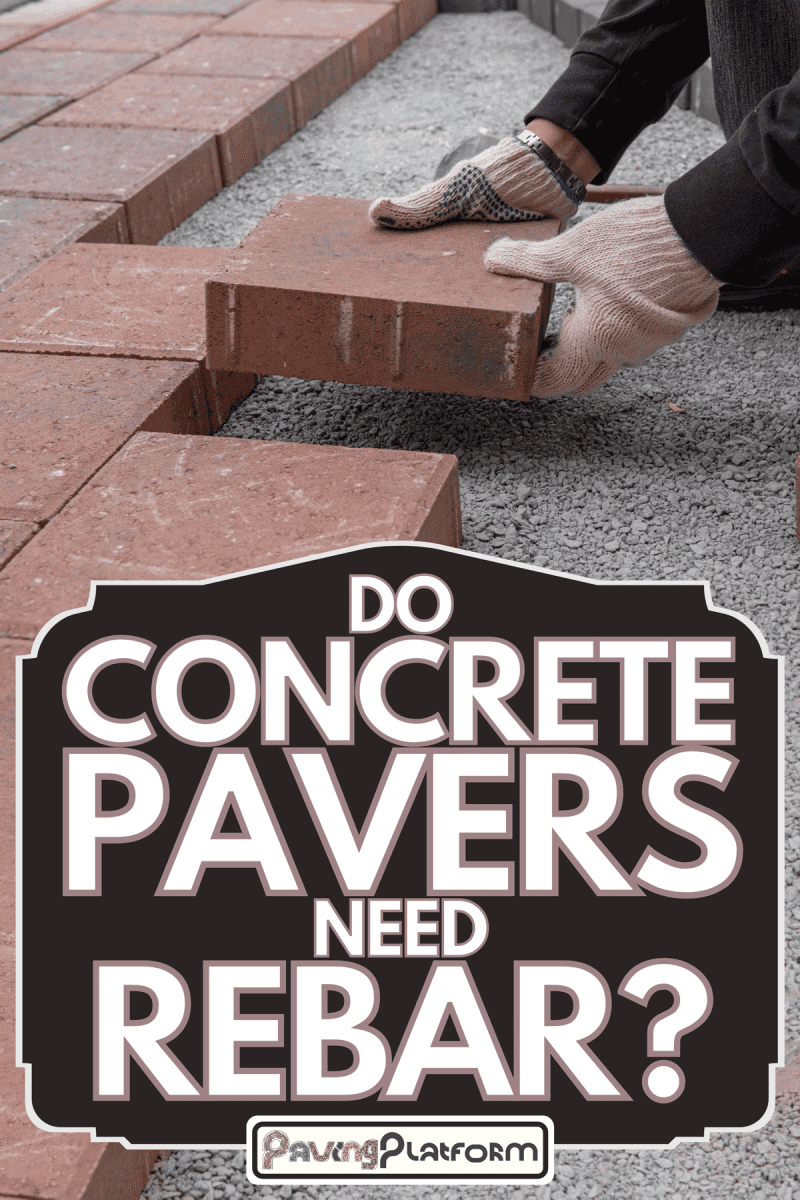
What Are Concrete Pavers Used For?
Concrete pavers are everywhere. You can see them on driveways, walkways, sidewalks, patio, playground, pool decks, and some other places These pavers are commonly installed over a compacted base of soil and sand.
Concrete pavers also offer a permeable surface allowing water to pass through since there isn't any grout between joints. In addition, concrete pavers also allow you to achieve that aesthetic natural stone look you've always wanted without so much hassle.
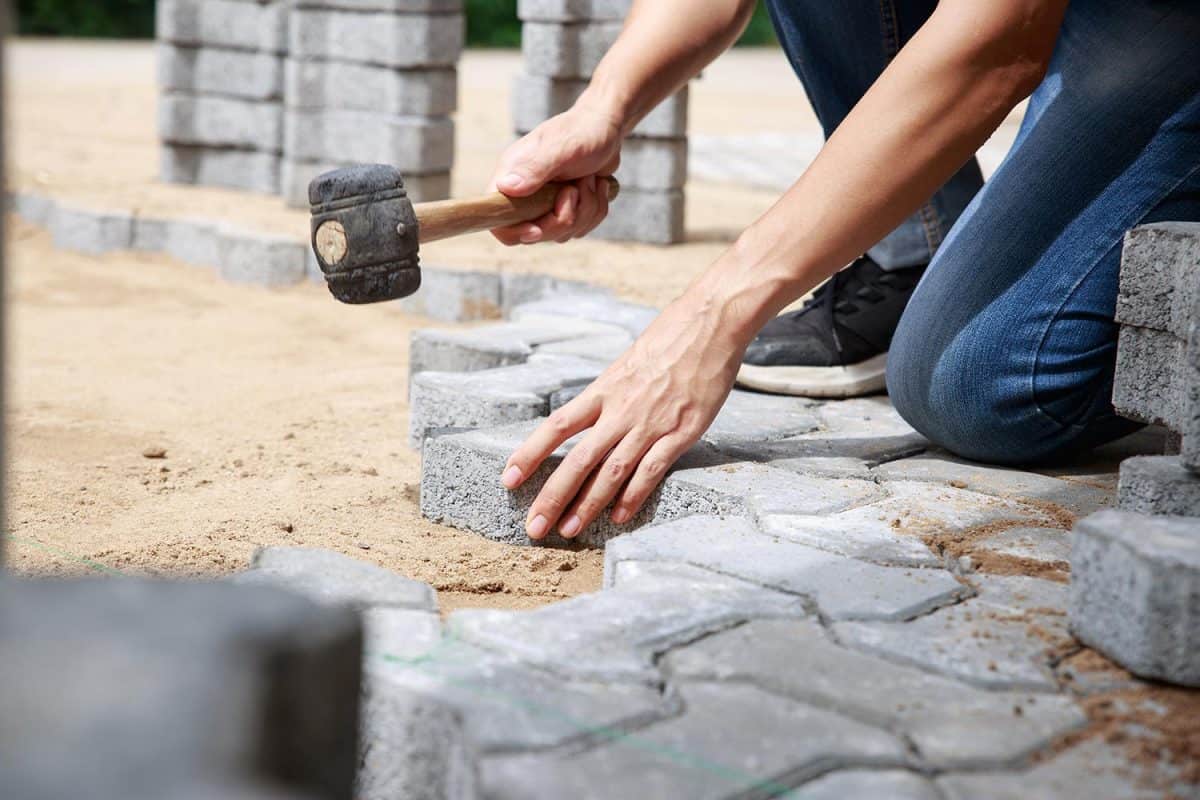
How Are Concrete Pavers Made And Why Don't They Need Rebar?
A dry concrete mixture composed of cement, gravel, sand, and pigments to add color is how concrete pavers are made. The dry mixture added with water is then poured and vibrated to compress into molds of different shapes and sizes. Curing is also vital to reach the optimal strength of concrete. These pavers are manufactured in different colors and textures.
The resulting product is capable of withstanding at least 8,000 lb/in2 of pressure which is much higher compared to about 3,000 lb/in2 pressure of quality poured concrete. The standard of manufacturing pavers is high, resulting in a durable and uniform product compared to poured concrete.
What Are The Classifications Of Concrete Pavers?
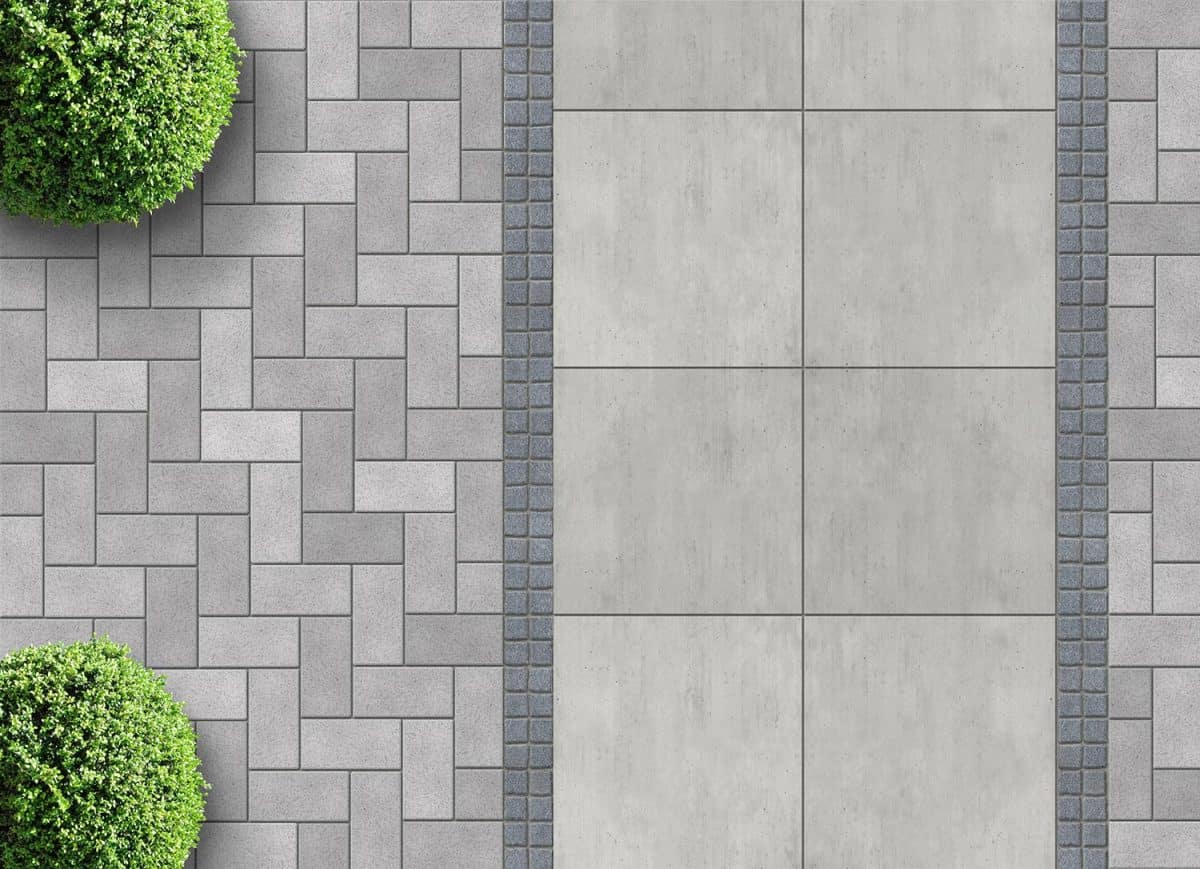
Concrete pavers are classified into two types: interlocking and architectural slabs. Interlocking pavers go way back after World War II when the Dutch ran out of brick which was then their traditional paving material. These pavers are designed in such a way that it locks in with the next paver.
A stronger connection between pavers is allowed by its locking effect. In addition, interlocking pavers make it resistant to movements under traffic.
On the other hand, architectural slab pavers are thinner and can't handle auto traffic compared to interlocking pavers. Note that these pavers are slightly more sensitive to the quirks of the freeze-thaw cycle. However, these pavers provide more aesthetics and neatly mimic the look of brick or natural stone.
How Are Concrete Pavers Installed?
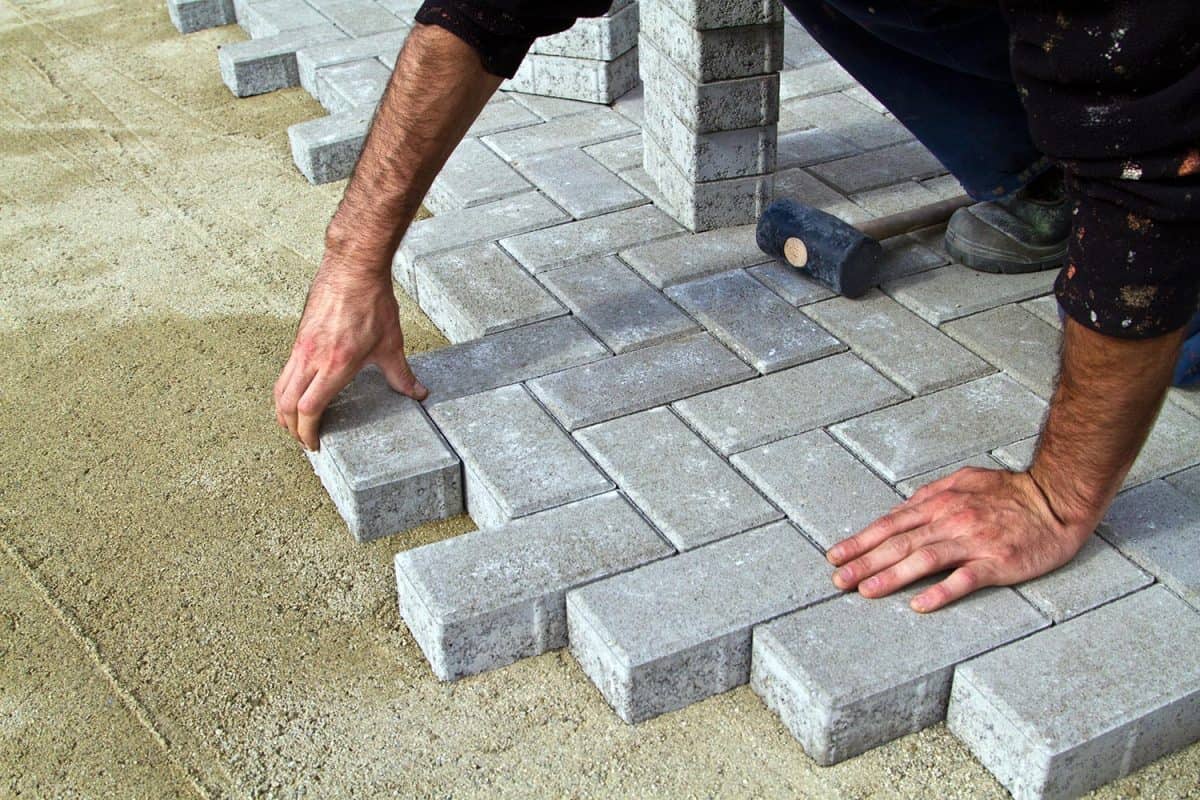
Concrete paver installation is not an easy DIY process- it's laborious and time-consuming. Installations are usually done by paver contractors who do it professionally. However, if you want to save some installation costs and want to do it yourself, here's a simple guide to help you.
Excavation & Base Layer
Installing concrete pavers typically starts with removing any existing pavement, grass, or extra soil. However, it is important to check and locate your underground pipes and wires first before you start excavation, with the help of your utility company.
Then, laying down and thoroughly compacting the gravel base comes next. Remember, for basic driveways, you need 1" of sand over 4"-6" of gravel base. However, for driveways that cater to heavy vehicles, the recommended thickness of gravel base is 10”-12”. To enable water runoff, you should grade the base with a slight slope.
You can also opt to add geotextile fabric to separate virgin soil from the base, especially where the soil is expansive, which is common in wet areas.
Install Edging
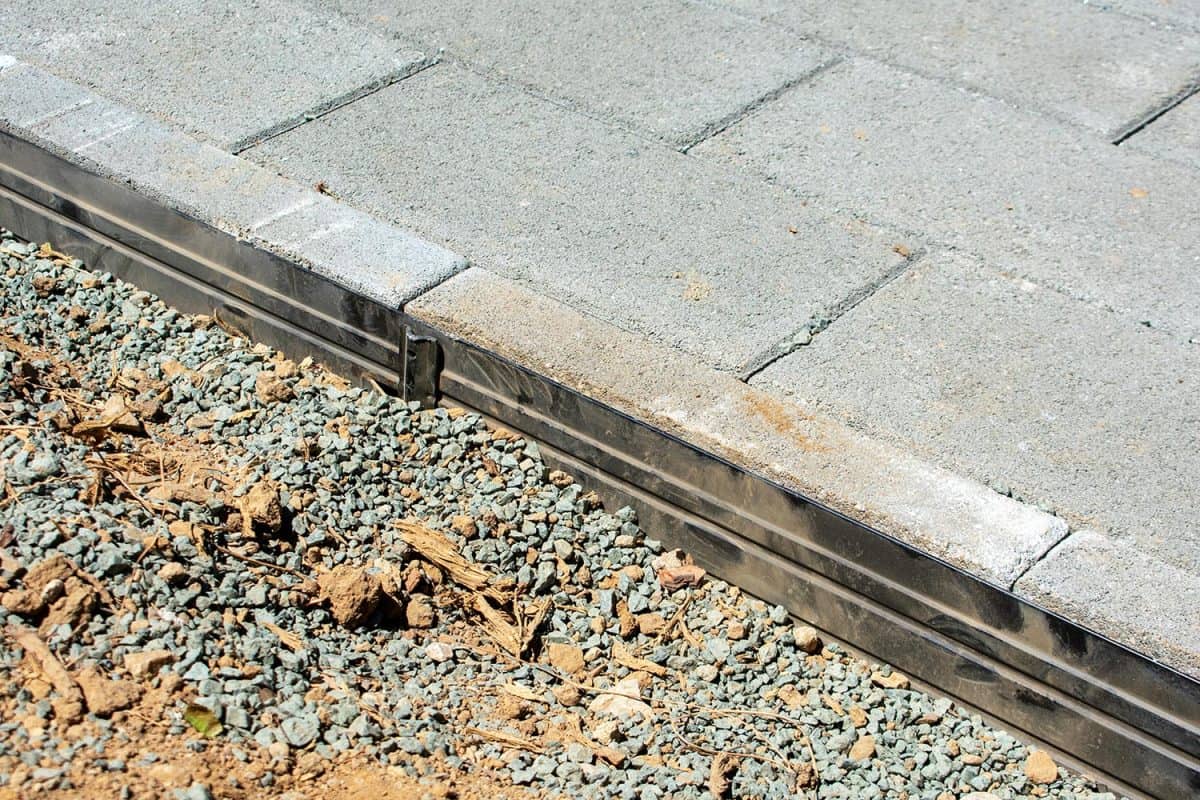
After the base is laid down and ready, install edging along the sides of the base to hold the pavers in place and stop them from moving and shifting. Check out this post about the types of edging to see what type works best for you and what you should go for.
Install & Compact Pavers
Next is spreading the setting bed with a 1" or 1-1/2" layer of sand. Concrete sand, granite stone dust, or coarse-washed concrete sand are commonly used. Pavers are then installed according to your desired pattern.
Finally, when you laid all the pavers in place, set the paver to the sand base by compacting the entire surface using a motorized plate compactor. Fill in the joints between pavers by sweeping the surface with sand. The purpose of the entire process is to secure the surface into a rigid, more uniform structure.
Click here for this plate compactor on Amazon.
How To Maintain Concrete Pavers?
Over time, pavers are exposed to dirt, stains, and wear. This commonly happens to all hardscape surfaces. For concrete pavers, maintenance requires very little practice. You can clean the surface of the pavers by occasional sweeping and hose rinsing. Stains can usually be removed by using concrete cleaners -check manufacturer's instructions for recommendations.
Click here for this waterless concrete cleaner on Amazon.
Driving winds or runoff can sweep off some joint sand. You can replenish the lost joint sand by simply applying dry sand to the joints. However, if this problem recurs, it is best to use sealers to hold the sands in the joints.
In addition, sealers can prevent weeds from germinating and also prevent ants from entering. Another good thing about sealers is that they usually come with de-icing salt protection so that your pavers are protected from degrading the smooth surface to some degree.
Click here for this penetrating concrete driveway sealer on Amazon.
It is easy removing the affected pavers, fixing the underlying problem, and putting the slabs or blocks back together should there be damage caused by penetrating tree roots, frost heave, or drop of pavement layers in some section of your surface. Concrete pavers can be expected to last 25 to 50 years when properly installed and maintained.
Final Words
Most concrete works need rebar with them. However, that is not the case for concrete pavers. They are more durable and stronger compared to poured concrete. These pavers also offer aesthetic designs and can work well with any home design. You can either go for interlocking pavers or architectural slab pavers- although interlocking pavers are much preferred especially for driveways with heavy vehicles.
While installation is not an easy DIY process and usually needs professional contractors, these pavers are low maintenance which means that you can do it yourself. Repairs are also easy since you can easily remove and put them back in place. On top of that, concrete pavers have a long lifespan which can last up to 50 years.
If you're looking for other options to use for your driveway, you can read these articles to help you.




![Vibrant Red Paver Stone Path, Can You Spray Paver Sealer? [How To Apply It]](https://pavingplatform.com/wp-content/uploads/2022/04/Vibrant-Red-Paver-Stone-Path-600x400.jpg)
![Properly laid out red pavers for a garden, Can You Tint Paver Sealer? [And How To]](https://pavingplatform.com/wp-content/uploads/2022/04/Properly-laid-out-red-pavers-for-a-garden-600x400.jpg)
